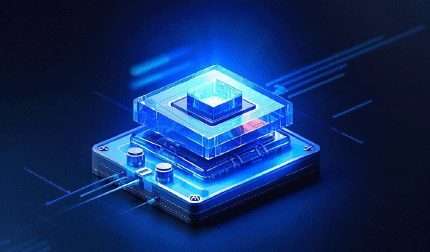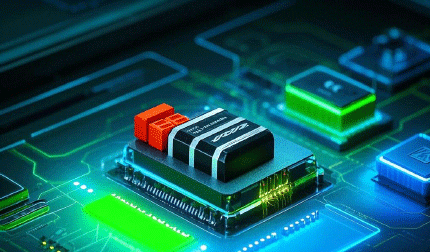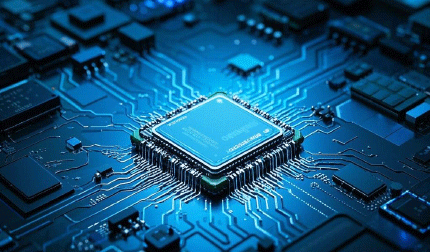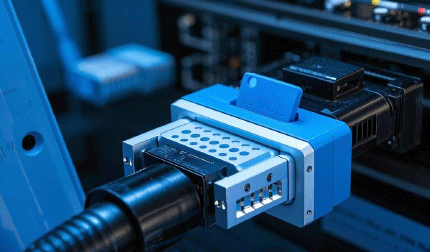Crystals, Oscillators, and Resonators: The Invisible Powerhouses Shaping Modern Technology
1/15/2025 5:56:26 PM
In the intricate world of electronics, there are components that often operate unnoticed but are fundamental to the proper functioning of countless devices. Crystals, oscillators, and resonators fall into this category. These unassuming elements play a crucial role in maintaining the stability, accuracy, and efficiency of a wide range of electronic systems, from the simplest consumer gadgets to the most advanced scientific instruments.
1. Understanding Crystals: The Heart of Precision Frequency Generation
1.1 The Nature of Crystals
Crystals, in the context of electronics, are solid materials with a highly ordered internal structure. The atoms or molecules within a crystal are arranged in a repeating pattern, forming a lattice structure. This regular arrangement gives crystals unique physical properties, including the ability to generate and respond to electrical signals in a very precise manner.
One of the most commonly used crystals in electronics is quartz. Quartz is a mineral composed of silicon and oxygen, and it has excellent piezoelectric properties. Piezoelectricity is the phenomenon where a crystal generates an electric charge when subjected to mechanical stress, and conversely, it deforms when an electric field is applied to it. This property makes quartz crystals ideal for use in frequency - control applications.
1.2 How Crystals Generate Frequencies
When an electric voltage is applied to a quartz crystal, it starts to vibrate at a specific frequency. This frequency is determined by the physical dimensions of the crystal, such as its thickness, shape, and the orientation of its crystal lattice. The relationship between the crystal's dimensions and its resonant frequency is highly precise and stable. For example, a thin - cut quartz crystal will have a higher resonant frequency compared to a thicker one.
The vibrating crystal acts as a natural oscillator. Once it starts vibrating, it continues to do so at its characteristic frequency as long as an electrical circuit is provided to sustain the vibrations. This self - sustaining vibration at a fixed frequency is the basis for the use of crystals in generating accurate and stable frequencies in electronic devices.

2. Oscillators: Bringing the Crystal's Frequency to Life
2.1 The Function of Oscillators
An oscillator is an electronic circuit that takes the natural resonant frequency of a crystal and uses it to generate a continuous electrical signal at that frequency. In essence, it amplifies the small electrical signals generated by the vibrating crystal and provides a stable output signal that can be used by other components in an electronic system.
Oscillators are essential for a wide range of applications. They are used to generate the clock signals in microprocessors, which synchronize the operations of different components within the processor. In communication systems, oscillators are used to generate the carrier frequencies for transmitting and receiving signals. Without accurate and stable oscillators, digital circuits would not be able to function properly, and communication systems would experience errors and interference.
2.2 Types of Oscillators
There are several types of oscillators, but the most common ones that use crystals are crystal oscillators. Crystal oscillators can be classified into two main categories: series - resonant and parallel - resonant crystal oscillators.
In a series - resonant crystal oscillator, the crystal is connected in series with the feedback loop of the oscillator circuit. The crystal acts as a frequency - selective element, allowing only the signal at its resonant frequency to pass through the feedback loop. This type of oscillator is often used in applications where a high - Q (quality factor) is required, such as in precision timing circuits.
Parallel - resonant crystal oscillators, on the other hand, have the crystal connected in parallel with the feedback loop. The parallel - resonant circuit formed by the crystal and other components in the oscillator determines the operating frequency. This type of oscillator is more commonly used in applications where a broader range of frequencies can be adjusted slightly around the crystal's resonant frequency.
3. Resonators: Fine - Tuning the Frequency Response
3.1 The Role of Resonators
Resonators are components that are designed to resonate at a specific frequency. In the context of crystals, a crystal resonator is essentially a crystal - based component that is optimized for its resonant properties. Resonators are used to filter out unwanted frequencies and to enhance the performance of circuits that operate at a particular frequency.
For example, in a radio - frequency (RF) circuit, a crystal resonator can be used to select a specific frequency for transmission or reception. The resonator will only allow signals at its resonant frequency to pass through with minimal attenuation, while attenuating signals at other frequencies. This helps to improve the selectivity and sensitivity of the RF circuit, reducing interference from other signals.
3.2 Comparing Resonators with Oscillators
While both resonators and oscillators are related to frequency generation and control, there are some key differences between them. An oscillator is a self - contained circuit that generates a continuous electrical signal at a specific frequency. It uses a crystal as a frequency - determining element but also includes additional components for amplification and feedback to sustain the oscillation.
A resonator, on the other hand, is mainly a passive component that is designed to resonate at a particular frequency. It does not generate an electrical signal on its own but rather responds to an external electrical signal by vibrating at its resonant frequency. Resonators are often used in combination with other active components, such as amplifiers, to create circuits that can filter, select, or enhance signals at a specific frequency.
4. Applications of Crystals, Oscillators, and Resonators
4.1 Consumer Electronics
In the world of consumer electronics, crystals, oscillators, and resonators are everywhere. In smartphones, for example, they are used in multiple ways. The clock oscillator in the smartphone's microprocessor is responsible for providing the timing signals that coordinate the execution of all the tasks, from running applications to handling communication with other devices. This oscillator uses a crystal to ensure accurate and stable timing, which is crucial for the smooth operation of the phone's operating system and various applications.
In addition, the wireless communication modules in smartphones, such as Wi - Fi, Bluetooth, and cellular modules, rely on oscillators and resonators to generate and select the correct frequencies for signal transmission and reception. These components help to ensure reliable and high - speed communication, allowing users to browse the internet, stream videos, and make calls without interruption.
In other consumer electronics devices like smartwatches, tablets, and laptops, crystals, oscillators, and resonators also play similar roles. They are used in the internal clocks, communication modules, and in some cases, in audio and video processing circuits to ensure accurate timing and frequency control.
4.2 Telecommunications
The telecommunications industry is heavily dependent on crystals, oscillators, and resonators. In base stations, which are responsible for wireless communication with mobile devices, highly accurate oscillators are used to generate the carrier frequencies for signal transmission. These oscillators need to be extremely stable to ensure that the signals are transmitted and received correctly over long distances.
In fiber - optic communication systems, which are used for high - speed data transmission over long - haul networks, crystals and resonators are used in the optical transmitters and receivers. They help to control the frequency of the laser signals used for data transmission and to accurately demodulate the received signals, ensuring high - speed and error - free data transfer.
4.3 Aerospace and Defense
In the aerospace and defense sectors, the need for highly reliable and accurate frequency - control components is even more critical. In satellites, crystals, oscillators, and resonators are used in various systems, including communication systems, navigation systems, and attitude control systems.
For example, in a global positioning system (GPS) receiver on a satellite, a highly stable oscillator is used to generate the reference frequency for the GPS signals. The accuracy of this oscillator directly affects the accuracy of the GPS positioning. In military applications, such as radar systems, resonators are used to filter and select the frequencies for radar signal transmission and reception, allowing for the detection of targets with high precision.
4.4 Industrial and Scientific Applications
In industrial applications, crystals, oscillators, and resonators are used in a wide range of equipment. In industrial automation systems, they are used in programmable logic controllers (PLCs) to provide accurate timing for controlling the operation of machinery. In scientific instruments, such as spectrometers and atomic clocks, these components play a crucial role in ensuring the accuracy and precision of measurements.
Atomic clocks, which are the most accurate timekeeping devices known, use the resonant properties of atoms to generate extremely stable frequencies. These frequencies are then used to define the standard unit of time, the second. While the technology behind atomic clocks is complex, crystals, oscillators, and resonators are still used in the supporting electronics to ensure the proper operation of the atomic clock system.
5. Technological Advancements in Crystals, Oscillators, and Resonators
5.1 Miniaturization
One of the key trends in the development of crystals, oscillators, and resonators is miniaturization. As the demand for smaller and more portable electronic devices increases, there is a need for these components to be smaller in size without sacrificing performance. Manufacturers have been able to reduce the size of crystals and related components through advanced manufacturing techniques, such as micro - machining and thin - film deposition.
For example, surface - mount technology (SMT) has made it possible to produce very small crystals and oscillators that can be easily mounted on printed circuit boards. These miniature components are now widely used in smartphones, wearables, and other compact electronic devices.
5.2 Improved Frequency Stability
Another area of focus in the development of these components is improving frequency stability. In applications where precise timing is crucial, such as in high - speed communication systems and scientific research, any deviation in the frequency can lead to errors and inaccuracies. New materials and manufacturing processes are being developed to reduce the temperature - induced frequency variations in crystals.
For instance, some advanced crystals are now coated with special materials that help to compensate for the changes in frequency due to temperature fluctuations. This has led to the development of ultra - stable oscillators and resonators that can maintain their frequency accuracy over a wide range of operating conditions.
5.3 Integration with Other Components
There is also a growing trend towards integrating crystals, oscillators, and resonators with other components on a single chip. This integration can reduce the overall size and cost of electronic systems while also improving their performance. For example, some modern microprocessors have integrated clock oscillators, eliminating the need for external components and reducing the power consumption and signal interference.
In addition, the integration of these components with other analog and digital circuits on a single chip can lead to more efficient and compact system - on - a - chip (SoC) designs, which are becoming increasingly popular in applications such as mobile devices and Internet of Things (IoT) devices.
6. Challenges Facing the Industry
6.1 Material and Manufacturing Constraints
The production of high - quality crystals, oscillators, and resonators is highly dependent on the quality of the raw materials and the precision of the manufacturing processes. The extraction and purification of quartz, the most commonly used crystal material, can be a complex and costly process. Any impurities in the quartz can affect the performance of the resulting crystal components.
In addition, the manufacturing processes for these components require highly specialized equipment and skilled labor. As the demand for smaller and more accurate components increases, manufacturers face challenges in developing new manufacturing techniques that can meet these requirements while maintaining cost - effectiveness.
6.2 Compatibility with New Technologies
As new technologies emerge, such as 5G communication, artificial intelligence, and quantum computing, there is a need for crystals, oscillators, and resonators to be compatible with these technologies. For example, 5G communication requires extremely high - frequency and high - precision oscillators to support the high - speed data transmission and low - latency requirements. Developing components that can meet these new requirements while also being compatible with existing electronic systems is a significant challenge.
6.3 Environmental Concerns
The electronics industry, including the production of crystals, oscillators, and resonators, also faces environmental concerns. The manufacturing processes often involve the use of chemicals and materials that can have an impact on the environment if not properly managed. In addition, the disposal of electronic waste, which contains these components, is a growing issue.
Manufacturers are now under pressure to develop more environmentally friendly manufacturing processes and to ensure that their products are recyclable. This requires research and development efforts to find alternative materials and manufacturing techniques that are more sustainable.
7. The Future Outlook
7.1 The Internet of Things (IoT) and Smart Devices
The growth of the Internet of Things (IoT) and the increasing prevalence of smart devices will continue to drive the demand for crystals, oscillators, and resonators. In an IoT - enabled world, where countless devices are connected and communicate with each other, accurate frequency control and timing are essential for reliable communication and data transfer.
These components will be used in a wide range of IoT devices, from smart home sensors to industrial monitoring equipment. As the IoT ecosystem expands, there will be a need for smaller, more energy - efficient, and more accurate crystals, oscillators, and resonators to support the diverse applications.
7.2 Next - Generation Communication Technologies
With the advent of 5G and the development of future communication technologies, such as 6G, the demand for high - performance frequency - control components will only increase. These next - generation communication technologies require extremely stable and accurate oscillators and resonators to support high - speed data transfer, low - latency communication, and the large number of connected devices.
Manufacturers will need to continue to innovate and develop new products that can meet the stringent requirements of these emerging communication technologies. This will likely lead to further advancements in materials, manufacturing processes, and component design.
7.3 Emerging Fields such as Quantum Computing
In the emerging field of quantum computing, crystals, oscillators, and resonators may also play a role. While the technology is still in its early stages, the development of quantum - computing systems requires precise control of various physical parameters, including frequency and timing. These components could be used in the supporting electronics of quantum - computing devices to ensure the accurate operation of the quantum bits (qubits) and the overall system.
In conclusion, crystals, oscillators, and resonators are essential components in the world of electronics. Despite their small size and often - overlooked presence, they are the invisible powerhouses that enable the proper functioning of a vast array of modern technologies. As technology continues to evolve, these components will also need to adapt and improve to meet the demands of new applications, while also addressing the challenges facing the industry. The future holds great potential for further advancements in the design, manufacturing, and application of crystals, oscillators, and resonators, which will undoubtedly have a profound impact on the development of technology as a whole.




